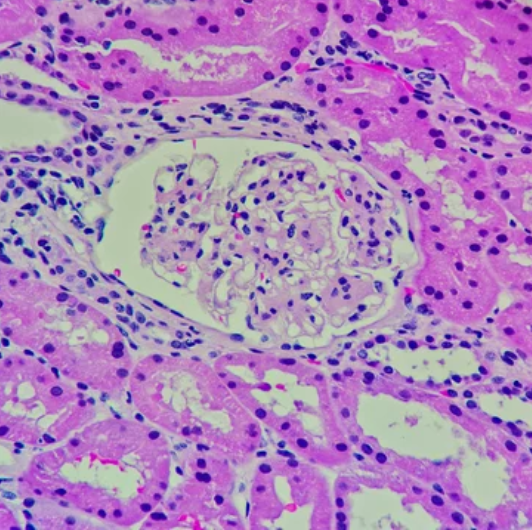 For many patients with IgA Nephropathy (IgAN), their disease can progress slowly and the level of treatment required may be minimal for years on end. But patients with a more progressive form of the disease may require earlier and more aggressive treatment with immunosuppression, which comes with difficult side effects.
For many patients with IgA Nephropathy (IgAN), their disease can progress slowly and the level of treatment required may be minimal for years on end. But patients with a more progressive form of the disease may require earlier and more aggressive treatment with immunosuppression, which comes with difficult side effects.
A recently developed clinical tool aims to help doctors better predict in which cases disease is more likely to progress and therefore who may benefit from earlier intervention with immunosuppression. BC Renal researchers joined an international collaboration to evaluate the IgAN Prediction Tool, finding it to be substantially more effective than conventional methods for measuring disease progression. The results were described in a study published last October in
Kidney International.
Currently, many clinicians simply monitor protein in the urine to determine when an IgAN patient’s disease has progressed to the point where intervention is necessary. However, the IgAN Prediction Tool was designed to offer a more multifaceted and personalized approach to predicting disease progression. It includes a number of predictor variables, such as blood pressure, demographics and laboratory results.
Dr. Sean Barbour, associate professor with the UBC Division of Nephrology, is a key researcher involved in the development and evaluation of the new tool. “You can use it to give patients some ease of mind if they are at low risk of progression and then target your health care resources and efforts to patients who are more high-risk,” he explains.
Barbour and his colleagues, with the help of other collaborators at study sites across more than 10 countries, sought to evaluate the tool’s efficacy. They followed thousands of patients with IgAN for more than five years. The results show that using the protein levels in urine as a threshold for initiating immunosuppression resulted in more patients unnecessarily being assigned this treatment. In contrast, the tool was much better at identifying who would likely benefit from immunosuppression and who would not.
Of significance, the IgAN Prediction Tool was designed for adults. Major questions remained about how applicable the tool was for children, whose predictor variables (e.g., blood pressure) can vary from adults. A particularly critical difference is that children have a greater capacity to repair damaged tissues. This means their disease could be affecting their kidneys substantially, but kidney function may actually improve at times before they reach adulthood.
“So we put a lot of effort into adapting and validating this model in children to account for these different factors,” says Barbour. This involved following more than 1,000 children through their transition into adulthood, in a large-scale multi-ethnic study. The results were published November 2020 in Kidney International.
Importantly, the updated pediatric tool was able to detect which children were likely to have more severe disease progression later in life. Whereas all children saw an improvement in kidney function (measured by eGFR), those with a relatively minimal improvement were more likely to have severe disease progression in early adulthood.
These studies provide significant insights for both patients with IgAN and doctors in understanding individual risk of disease progression. Barbour underscores that this work could not have been accomplished without the large-scale collaboration done with colleagues in other countries, which is a notable departure from how small research groups studying IgAN have worked independently in the past.
Barbour says, “The smaller sample sizes of these past studies has perpetually limited our ability to actually accomplish meaningful prediction modeling, so one of the more rewarding aspects of this work was being able to pull different investigators from around the world into a collaborative research group through the International IgA Nephropathy Network.”
Next, Barbour and others through the International IgA Nephropathy Network would like to take the IgAN Prediction Tool one step further by adapting it to provide personalized estimates for how patients may respond to treatment with immunosuppression, for example with the corticosteroid prednisone.

